It’s essential to have the correct RH technique in order to improve in your playing. First we must focus on the right hand and the proper technique associated with it.
Having proper technique will make playing much easier and allow you to play more challenging repertoire and exercises.
Fingers and Strings
Thumb should be on the sixth, fifth, and fourth strings while the index middle ring will be on the third, second and first strings.
P = 6, 5, 4
I = 3
M = 2
A = 1
Right hand positioning
The right hand should be hovering over the sound hole in the middle. You can also place it back slightly as well for a different timbre. Make sure the right hand is relaxed while hanging over the strings.
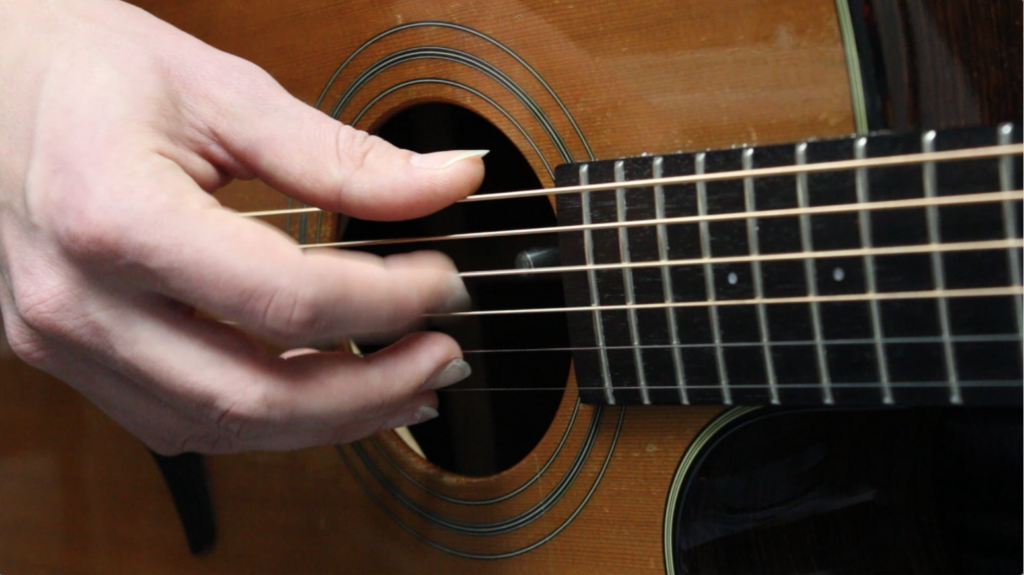
Attack motion
The attack should be a motion of the fingers coming in towards the palm. Prevent yourself from plucking up, or a clawing attack, which will cause the strings to be bright and thin.
Here is a video on beginner finger picking patterns I recommend:
Practice this with your own songs, or solely to work on your technique in order to improve your playing.
Learn more about technique through our FREE Fingerstyle Workbook!
FOLLOW US ON
Get our FREE Fingerstyle Workbook!
RELATED BLOG POSTS
Guitar Open Tunings
Today, we’re diving into the world of guitar open tunings – a versatile and exciting approach that can unlock a whole new universe of sounds and possibilities on the fretboard.
Open tunings involve tuning the strings of the guitar to form a chord when played open (i.e., without pressing down any frets). This allows you to create rich, resonant harmonies and explore unique chord voicings and melodies that are not possible in standard tuning.
There are countless open tunings to explore, each with its own distinct sound and character. Some of the most common open tunings include Open D (DADF#AD), Open G (DGDGBD), and Open C (CGCGCE), but the possibilities are truly endless.
To get started with guitar open tunings, it’s essential to familiarize yourself with the tuning patterns and chord shapes associated with each tuning. Experiment with tuning your guitar to different open tunings and explore how the altered string intervals affect the overall sound and feel of the instrument.
Once you have a basic understanding of open tunings, start experimenting with different chord voicings, melodies, and improvisations on the fretboard. Since open tunings create unique harmonic possibilities, don’t be afraid to think outside the box and explore unconventional chord progressions and melodic ideas.
In addition to exploring open tunings on your own, try listening to recordings of guitarists who use open tunings creatively in their playing. This will help you develop an ear for recognizing open tunings in music and inspire you to incorporate them into your own playing.
In conclusion, mastering guitar open tunings is a rewarding journey that can greatly enhance your playing and musical creativity. By exploring the rich harmonic possibilities of open tunings, you can create music that is unique, expressive, and truly captivating. So grab your guitar and start experimenting with open tunings today!
Guitar Double Stops
Whether you’re a beginner eager to expand your repertoire or an advanced player looking to add depth and dimension to your playing, mastering double stops can take your guitar skills to the next level.
Double stops are simply two notes played simultaneously on the guitar, creating a harmonious blend of tones. They are commonly used in various styles of music, from blues and rock to country and folk, to add richness and texture to chord progressions and melodies.
To get started with guitar double stops, it’s essential to understand basic music theory concepts like intervals and chord construction. Familiarize yourself with common intervals such as thirds, fourths, fifths, and sixths, and experiment with playing them together on different strings and frets.
Once you have a solid understanding of intervals, start practicing double stops using simple chord progressions and melodies. Focus on maintaining clean and clear articulation, ensuring that both notes ring out evenly and harmoniously.
As you become more comfortable with double stops, challenge yourself to incorporate them into your playing in musical contexts. Experiment with using double stops to embellish chords, add melodic flourishes, and create interesting harmonies in your compositions and arrangements.
In addition to practicing double stops on your own, try listening to recordings of guitarists who use double stops creatively in their playing. This will help you develop an ear for recognizing double stops in music and inspire you to incorporate them into your own playing.
In conclusion, mastering guitar double stops is a valuable skill that can greatly enhance your playing and musical creativity. By adding depth and dimension to your music with double stops, you can create sounds that are rich, expressive, and truly captivating. So grab your guitar and start exploring the world of double stops today!
Guitar Harmonics Techniques
Whether you’re a beginner just starting out or an advanced player looking to expand your sonic palette, mastering harmonics can add a whole new dimension to your music.
Guitar harmonics are produced by lightly touching the strings at specific nodal points while plucking or strumming them. This creates bell-like tones that are higher in pitch than the fundamental notes of the strings. Harmonics can be divided into two main types: natural harmonics and artificial harmonics.
Natural harmonics occur at specific locations along the length of the string, known as nodal points. By lightly touching the string at these nodal points and plucking it, you can produce harmonics of various pitches. Experiment with different frets and strings to discover the natural harmonics available on your guitar.
Artificial harmonics, on the other hand, are produced by fretting a note with one hand and lightly touching the string with the index finger of the picking hand at a specific distance from the fretted note. This creates a harmonic of the fretted note, allowing you to play harmonics at any fret on the fretboard.
To master guitar harmonics techniques, start by practicing natural harmonics at various frets on the fretboard. Focus on producing clear, bell-like tones by lightly touching the strings at the nodal points. Once you’re comfortable with natural harmonics, experiment with incorporating them into your playing in musical contexts.
Next, experiment with artificial harmonics by fretting a note and using your picking hand to produce harmonics at various distances from the fretted note. This technique requires precise control and coordination between both hands, so start slowly and gradually increase the speed and complexity of your playing.
In addition to practicing harmonics on your own, try listening to recordings of guitarists who use harmonics creatively in their playing. This will help you develop an ear for recognizing harmonics in music and inspire you to incorporate them into your own playing.
In conclusion, mastering guitar harmonics techniques is a rewarding journey that can greatly enhance your playing and musical creativity. By adding shimmering, ethereal tones to your music, you can create sounds that are truly unique and captivating. So grab your guitar and start exploring the magical world of harmonics today!
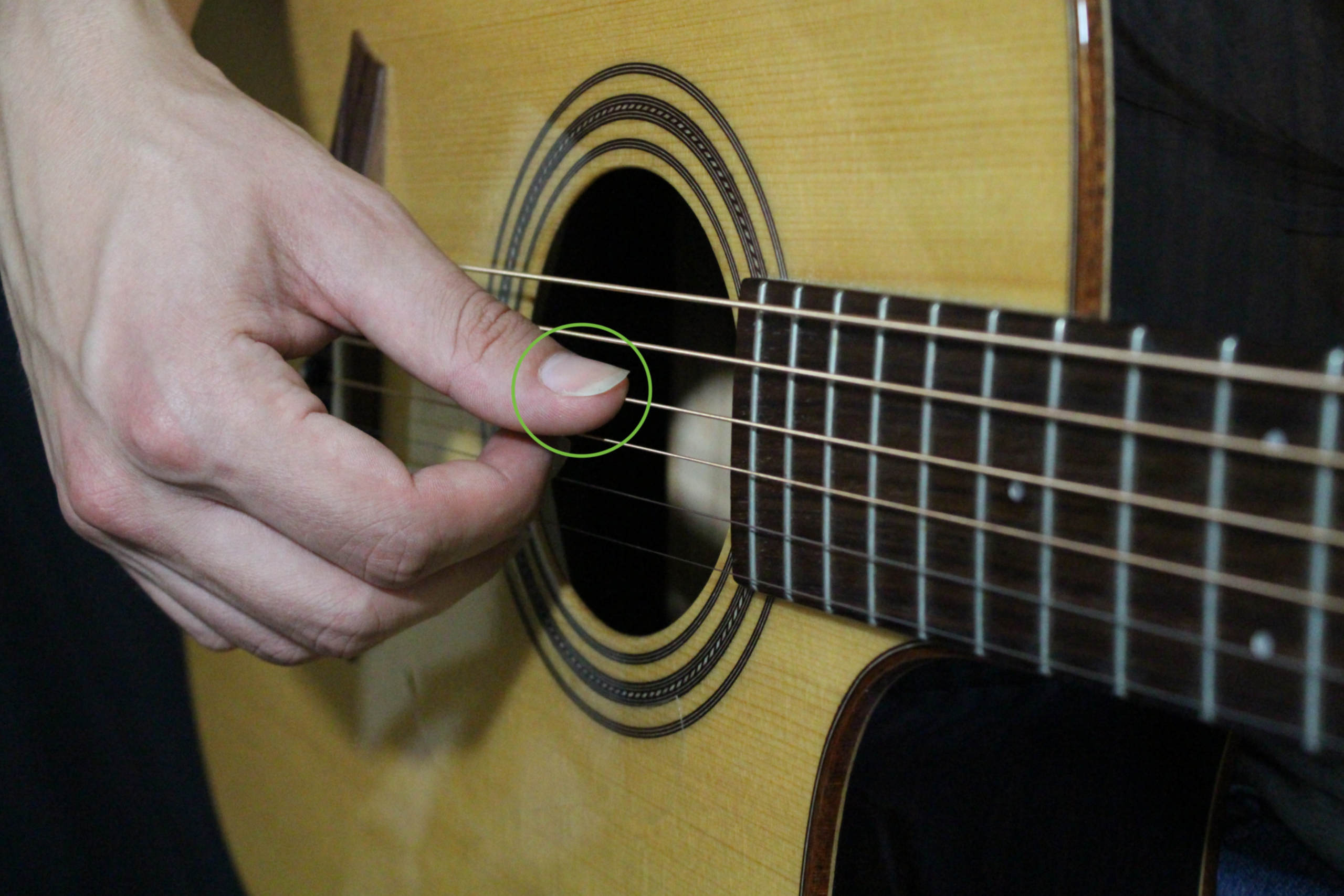
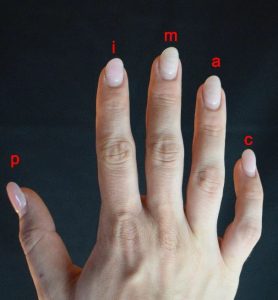
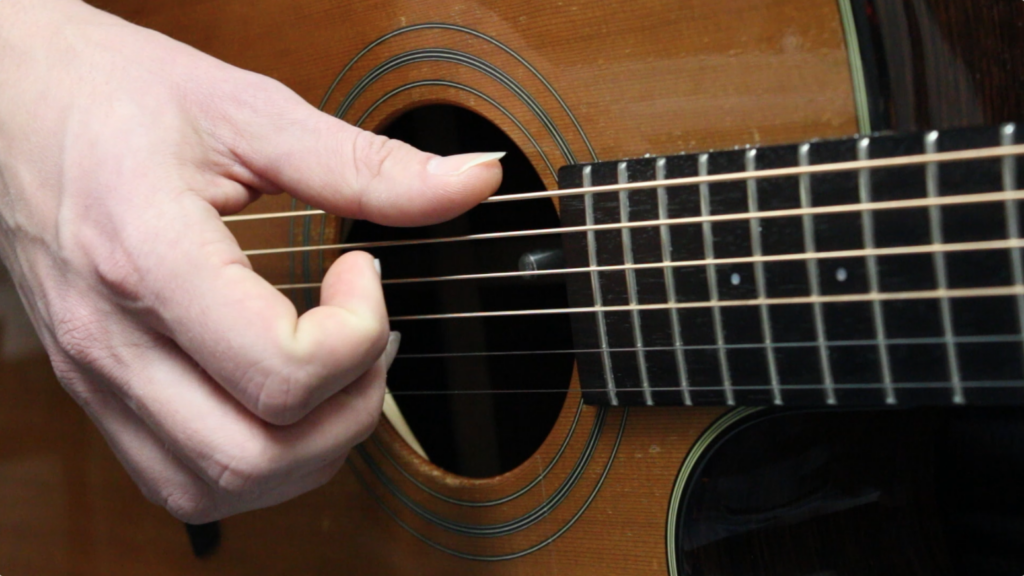
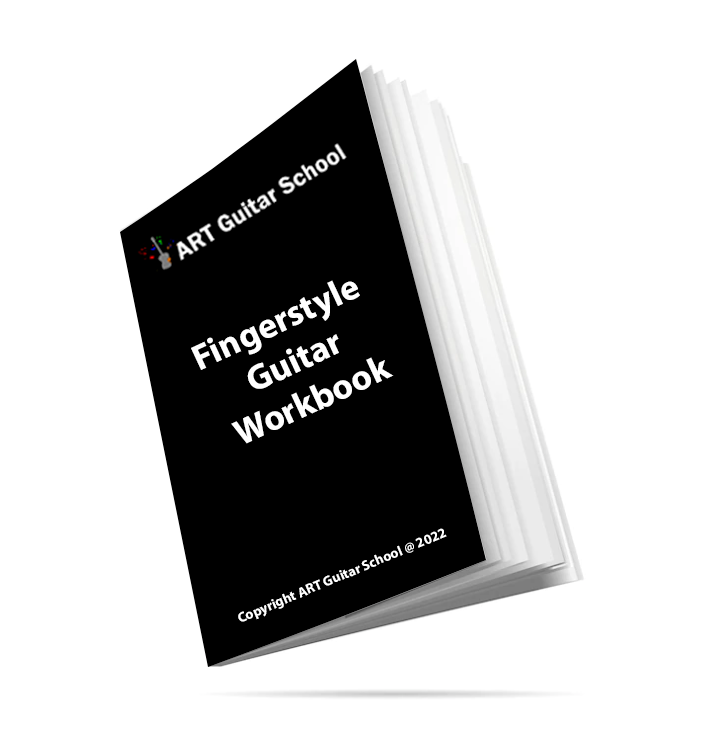
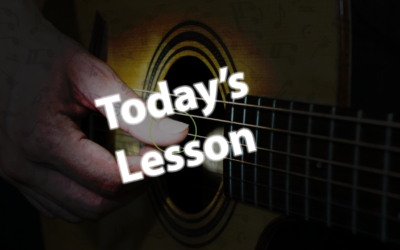
0 Comments